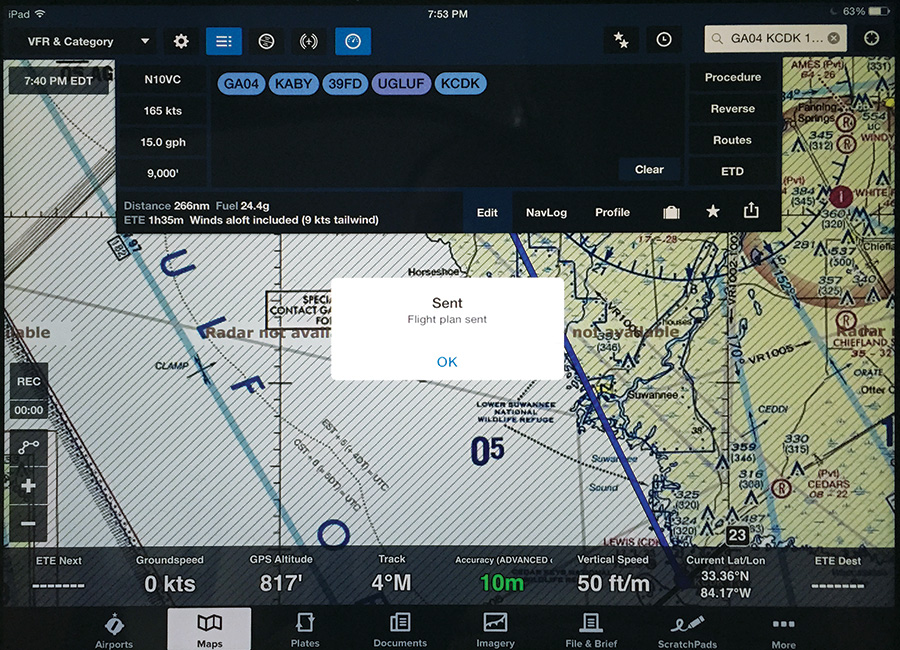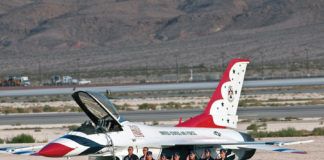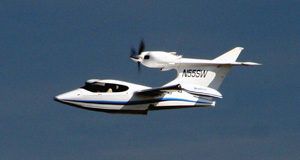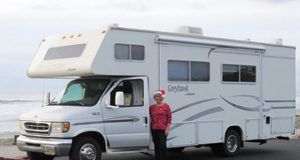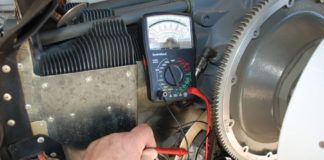
Here is the panel installed in the RV-10 in 2009 with the Touch Screens upgraded in 2014. Still very capable.
Awhile back I penned a column regarding all of the “toys” we have in our cockpits and pretty much justified all of them based on their contribution to the safety factor. Over the course of the past year, I upgraded a lot of instrument panels for various aircraft, primarily RVs, and I have to admit that I was beginning to get a little jealous. Ever since our avionics have become more PC-like, the panel might be outdated even before you fly it, especially if you happen to order your avionics too early in the build process. Although I was really pleased with my panel in the RV-10 when I finished it in 2009, five years is a long time these days when it comes to electronic gadgets. And even though I updated my Advanced Flight Systems (AFS) 4500 EFISes to 5400 Touch Screens last summer, there are some improvements in other areas that have really caught my attention. And I admit I am fascinated with the technology.
I have had the opportunity to completely upgrade quite a few panels from standard six-pack gyro panels to the new Garmin G3X Touch, as well as the new AFS Touch Screens. And while I don’t intend to review each manufacturer’s pros and cons in this column, I am going to share with you a few of the things that helped me in my decision-making process. And I am going to throw in some more do’s and don’ts related to panel installations, both old and new, as well as share some frustrations.
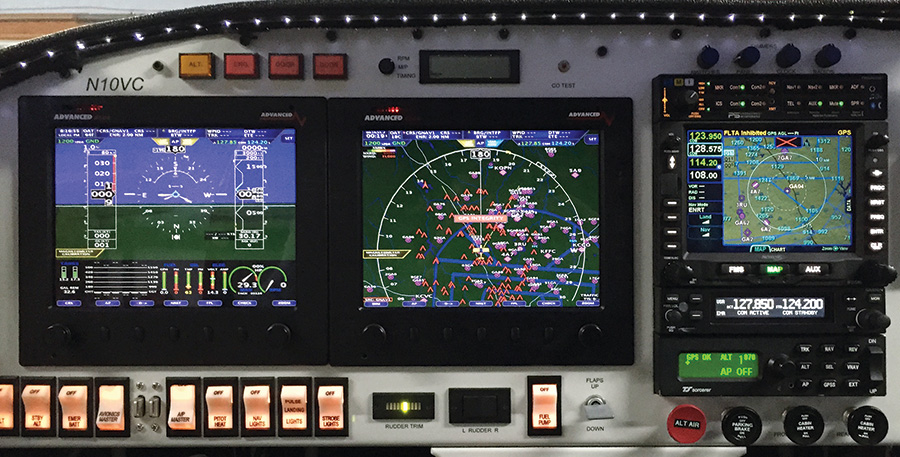
The newly completed RV-10 panel with the Avidyne IFD540, Garmin GTR 225 com, and relocated EFIS-D10A. The transponder is now remote-mounted.
Why Upgrade?
A number of people have told me that their decision to upgrade has been prompted by their gyros acting up. It’s been quite interesting to discover the real reasons behind the gyro problems. The reality is that our panel systems have the same requirements for the installation whether they are mechanical or electrical—they both need to be properly installed. Vacuum systems need the proper size and type of hoses, and electrical systems need the proper size and type of wire. Vacuum systems plumbed with -inch air brake line or surgical rubber hose really don’t supply enough air flow to keep the gyros spinning at the proper speed, and I’ve seen way too many of those installations to think they are one-offs.
So, now back to me thinking I needed to upgrade my panel. Things were starting to show some wear after 1000 hours, and the newer products clearly had some features I liked. As an example, there’s one deficit that always bugged me and probably anyone else who regularly flew IFR and was issued a hold. Ever try doing a hold with a Garmin 430? Other than a published hold in an instrument approach, the only way I ever figured it out was to use the OBS function and select the inbound course while using the heading bug and autopilot to fly the circuit. It’s really kind of annoying. And I still couldn’t figure out how to do it on the Garmin 650, which I was trying to warm up to after having installed a number of them. Then I started playing with the Avidyne 540 Simulator App from the App Store. The IFD540 is a really cool box in itself, but guess what? You can place a hold anywhere you want. That’s right, anywhere. Quickly. And you define the inbound course, leg length, and right or left turns. Yep, I had to get me one of these!

How cool is this? An unpublished hold at our own airport entered with just a few keystrokes on the touch screen. Almost as fast as the controller can give you the clearance.
My only challenge with the IFD540 was the size, as it was bigger than the GNS 430 that was currently installed in my panel. But make it fit I would, and so I started thinking about other options and discussed them with Rob Hickman at AFS. First, I had the old NavWorx ADSB installation, which was not 2020 compliant. I had a GTX 330 transponder without the ES (extended squitter), so it was non-compliant, too. The TruTrak Sorcerer autopilot was also in my center stack, and it had worked flawlessly for the past five years, except for a failed roll servo.
It turns out that Rob had a couple of interesting options—first, get rid of the GTX 330 and use his remote-mounted transponder, which did have the ES output. Tying the transponder to the IFD540 (certified Level B GPS) would give me a 2020-compliant solution for ADS-B. Second, AFS also has an integrated autopilot. However, I am not one who likes to put all of my eggs in the same basket relative to hardware and software. I’ve spent my whole life in technology, and I’ve learned that things break, and sometimes at the most inopportune time. So I elected to keep the Sorcerer, which was capable of flying the airplane without any input from the EFIS or IFD540, should they fail. I did incorporate the remote transponder. Each of these decisions would have some downstream implications.
Even More Improvements
Another driver for me was to make the panel less cluttered and more user-friendly. Even though I pride myself on panel ergonomics, over the years I realized that the Dynon EFIS-D10A I had installed as a backup was really too far over to the right side of the cockpit. And the original personal driver that I had of keeping engine management separated from the EFISes in case they failed had not been needed during the last five years and 1000 hours. So I decided to eliminate the AF-3500 EMS and incorporate engine management into the left EFIS, allowing the EFIS-D10A to move into a more viewable spot.
One other way-cool feature I had learned about and find really exciting is the ability to flight plan on your iPad and then upload the flight plans to the EFISes via Wi-Fi in the cockpit. How cool is that? I can’t wait to try this out in the one area I know it will contribute greatly to flight safety, and that is in Alaska. Some of the low-level inland waterway flying, especially in low-visibility conditions, can get confusing. It takes strong discipline to constantly verify your position before executing any turns. When down low and in poor visibility, every island can start to look the same. Being able to enter the exact planned flight path into the EFIS prior to takeoff, using lat-long coordinates and not just named waypoints is huge in my opinion.
So the die was cast and I proceeded to gut my RV-10, after hours and on weekends. It made for some very long days and nights, as I really need my RV-10, since I use it to perform DAR inspections in the Southeast. You can see the before and after results in the pictures. I won’t go into the details of the actual installation. Suffice it to say that I did enjoy working on my own airplane, as I didn’t have to spend any time wondering where wires were run or why they were run certain ways. There was only one person to blame for any frustration!
So far, I am pleased with the results. However, I have continued to learn some things I thought I would share with you. The one thing I have never learned for myself is that early adoption is sometimes painful. You would have thought that the Prescott Pusher would have driven that home to me! Then I remind myself that it is important that I do learn early so I can pass it along to others, especially my customers.

Here is the flight plan as received from the ForeFlight on the iPad. It is instantaneous. While flying it is really quick to make rubber-band routing changes on the iPad and send them to the EFIS, like when diverting around weather. The IFD540 allows for rubber-banding, but not on the current active leg.
Language Barriers
The primary difference between our old mechanical panels and the newer electronic gizmos seems to be a language barrier. Yep, language. As an example, in a vacuum system the hoses carry the air, which is usually one flavor. In our electronic panels, the wires carry the electrons. And those electrons are arranged in little packets, and each manufacturer seems to arrange those little packets somewhat differently. Even when there are defined standards, the packets can be different. I guess it’s kind of like saying we all speak English in the U.S. and forget about all of the different dialects. I had made a lot of changes in the panel—new IFD540, new transponder, new com radio, and new beta code on the 5400s. And given that some of the products were recently introduced, you can imagine the state of the documentation!
As an example, the IFD540 manual states that aviation out (a data format that is sent between avionics boxes) is available on all four of the RS-232 ports. How cool is that? Especially since we need aviation out to the EFIS, the 406MHZ ELT, and the EFIS-D10A. So I proceeded to wire it accordingly and take advantage of all available ports. In the past a common practice was to combine many units onto one RS-232 signal line. Now we could eliminate the single point of failure, right? Well, to my surprise, once I applied power and started configuring everything, it was clear that I was getting aviation out on only one port. After some calls with Avidyne tech support, they realized it was a software limitation—only one port at a time would support aviation out, and the documents required correcting. I was not a happy camper. It is not easy to get back behind the panel and rearrange the pins. And after I did that, we also came to find out that only one port could be used for the ADS-B data stream and, of course, I had picked the wrong port. Back into the panel again.
Remember the bit about the electrons and dialects? It also turns out that the data stream between the IFD540 and the transponder did not initially work for 2020 ADS-B compliance, but that has since been rectified.
As for the code on the EFISes, it is pretty cool. Yes it is beta code, and I knew that, as I have done this for Rob in the past. He and his team are quick to fix problems, and I am pretty good at finding the bugs and get to influence the final product. It does mean no IMC for a while, but I always put that limitation on myself with all of the new toys and layout anyway. I’m a believer that in the clouds it has to be second nature. Lots of VFR practice on IFR flight plans really helps here.
Back in the Air
Outside of all of the test flights, Carol and I finally had a great day trip, VFR, to Cedar Key and back. It gave me time to really sit and play. Of course I found some more bugs, but I also found some new features in both the IFD540 and the EFISes that I really like. And since Carol took the time to redo the interior, we felt we had a new airplane. It’s amazing what a makeover can do!
I’m also sure that I will never be issued a holding clearance again, now that I can easily do it. And I have the highest confidence that all of the bugs will be fixed by the time this is published. There will probably even be some new toys I will be eyeing!

![]()
Vic Syracuse is a Commercial Pilot and CFII with ASMEL/ASES ratings, an A&P, DAR, and EAA Technical Advisor and Flight Counselor. Passionately involved in aviation for over 36 years, he has built nine award-winning aircraft and has logged over 7500 hours in 69 different kinds of aircraft. Vic had a career in technology as a senior-level executive and volunteers as a Young Eagle pilot and Angel Flight pilot. He also has his own sport aviation business called Base Leg Aviation.

